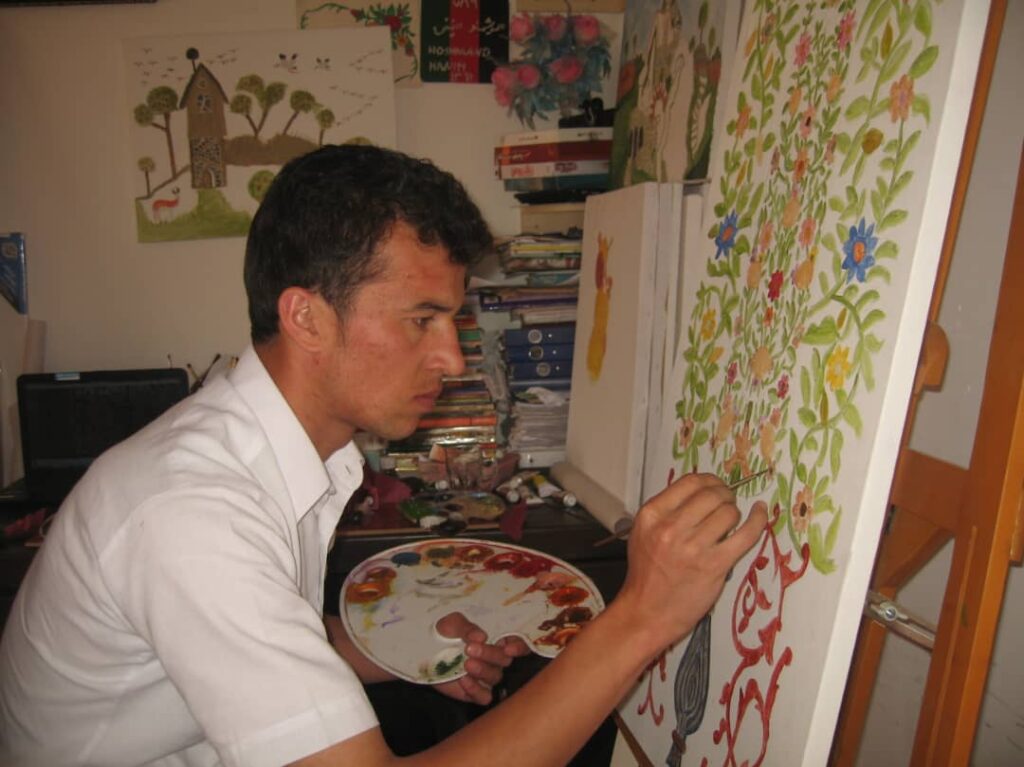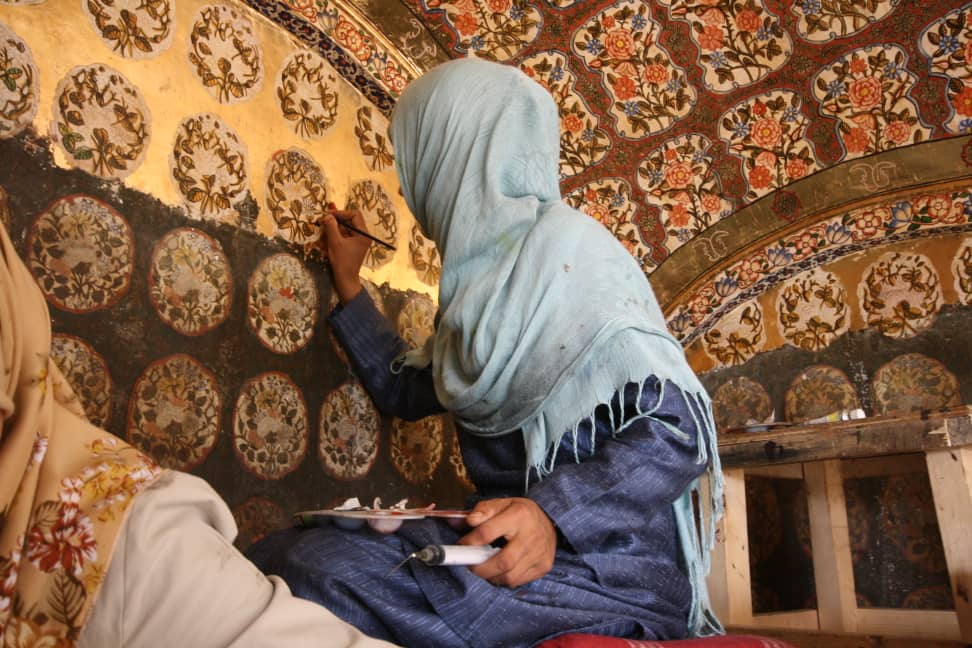AFGHANISTAN. Herat. For centuries, Herat has been a center of art and culture in Afghanistan. The miniature is the cultural heritage of the city. This ancient art was started by the founder of the Herat School of Art, Kamal al-din Bihzad (1450-1535 CE). This was during a time when Herat was the capital of Timurid empire. However, after decades of war, the art of miniatures slid into obscurity.
Now a young man seeks his path through the ancient art. he hopes to revive the legacy and save the historic icons from complete ruin. Hoshmand Hoshang, 28, learned the preliminary skills from Germans. He was a student and worked with them to repair the Bamiyan Buddha statues and other historic icons around the country.

For over ten years, he has practiced the art to revive its identity in the land which Khurasan (Old Afghanistan), possessed. It´s his belief that miniature art is what defines the soul of the country.
Painting on the ceiling
Hoshang found an interest in depicting illustrations using miniature style on the ceilings of palaces. He worked for over six years doing miniatures inside the presidential palace and repaired many historic sites. He is the artist who started the initiative of transferring miniatures onto a ceiling.
Sharing art with the nation´s youth
Hoshang launched an artist initiative of 25 girls and boys in Kabul called the Hoshmand Hoshang Art Group. He instructs them to practice their skills using the miniature style. In an interview with Transcontinental Times, he said, ”I will extend my work beyond this group in other provinces.”

“I want to convey the art to the four major provinces of Afghanistan and ultimately in all other provinces. If a peace comes nationwide, and we experience that, we will hold street exhibitions in all provinces so that our people become familiar with the art,” he said.
Meanwhile, Navid Mashouf, a miniaturist at the Faculty of Arts in Herat University says,” The government’s recklessness towards culture and art has made cultural heritage, one after another, famous in other countries.” He emphasizes that the history of Herat is relevant to miniature art and calligraphy. He believes the protection of this heritage is the most important for the nation´s culture and art.
Claiming ownership over the miniature
While countries in the region, including Iran and Turkey, have focused all their efforts on registering miniature art as part of their cultural heritage, in Afghanistan, the inheritor of the art seems to have no rank among government officials. They are not concerned about registering the country’s cultural heritage. A group of educators and university professors in Herat held a litigation meeting in the province, calling on the Afghan government to register miniature art and calligraphy as the province’s cultural heritage.
Rare opportunities to embrace the miniature legacy
The art of miniature is still taught in Herat and countless students at various universities in the country are also learning the rare art form. There are four faculties of fine arts in four major provinces within the country, of which most barely have job opportunities for its graduates to put their skills into practice. For Hoshang, nothing is impossible once there is economic support. He believes if the government supports the art, more youth would graduate from fine arts faculties and institutionalize it among people.
A rebirth in progress
Hoshang wants to broaden his art with other youths to awaken the dormant art that has been sleeping for centuries. Sharing a flashback on the beauty of miniature will help people learn the value of art, he believes.
Aside from security threats, most Afghan artists cannot count on their artworks to earn a daily income. Most have to follow two paths simultaneously. Hoshang also works as radio staff in Afghanistan.

